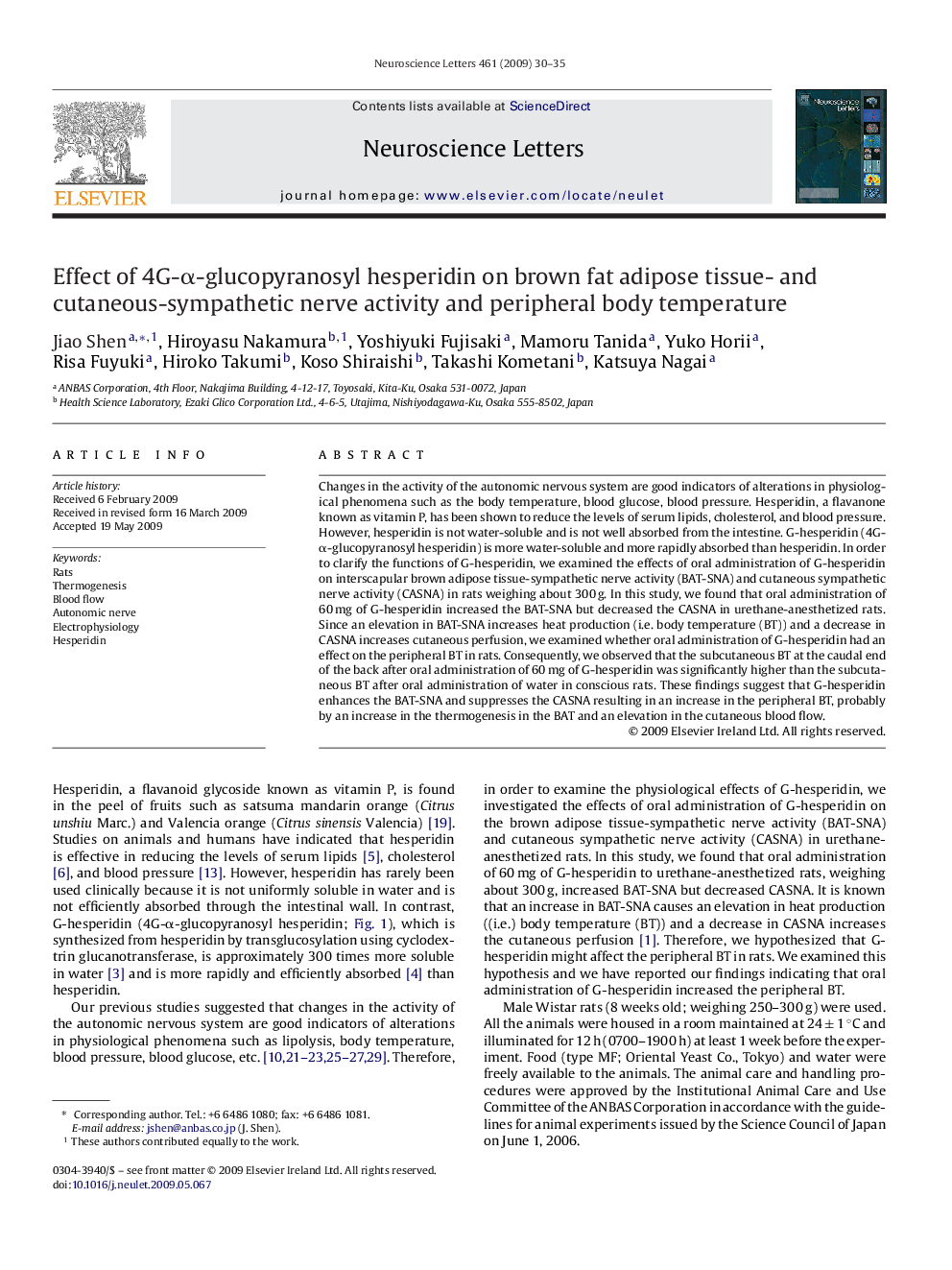| Article ID | Journal | Published Year | Pages | File Type |
|---|---|---|---|---|
| 4346755 | Neuroscience Letters | 2009 | 6 Pages |
Changes in the activity of the autonomic nervous system are good indicators of alterations in physiological phenomena such as the body temperature, blood glucose, blood pressure. Hesperidin, a flavanone known as vitamin P, has been shown to reduce the levels of serum lipids, cholesterol, and blood pressure. However, hesperidin is not water-soluble and is not well absorbed from the intestine. G-hesperidin (4G-α-glucopyranosyl hesperidin) is more water-soluble and more rapidly absorbed than hesperidin. In order to clarify the functions of G-hesperidin, we examined the effects of oral administration of G-hesperidin on interscapular brown adipose tissue-sympathetic nerve activity (BAT-SNA) and cutaneous sympathetic nerve activity (CASNA) in rats weighing about 300 g. In this study, we found that oral administration of 60 mg of G-hesperidin increased the BAT-SNA but decreased the CASNA in urethane-anesthetized rats. Since an elevation in BAT-SNA increases heat production (i.e. body temperature (BT)) and a decrease in CASNA increases cutaneous perfusion, we examined whether oral administration of G-hesperidin had an effect on the peripheral BT in rats. Consequently, we observed that the subcutaneous BT at the caudal end of the back after oral administration of 60 mg of G-hesperidin was significantly higher than the subcutaneous BT after oral administration of water in conscious rats. These findings suggest that G-hesperidin enhances the BAT-SNA and suppresses the CASNA resulting in an increase in the peripheral BT, probably by an increase in the thermogenesis in the BAT and an elevation in the cutaneous blood flow.
